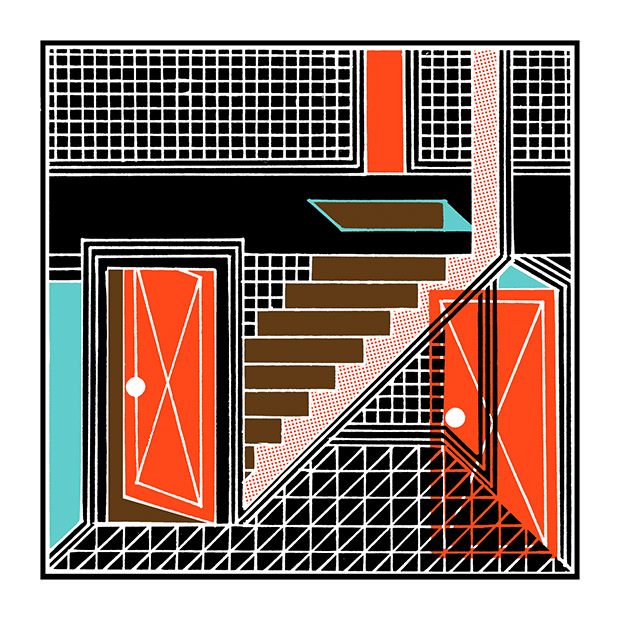For the third iteration of its printmaking-music mind-meld Ten × Ten, the art incubator Homeroom Chicago enlisted ten visual artists and ten composers of new music from the collective Access Contemporary Music. They soaked their brains in synesthesia, the experience of mixing sense data (Pythagoras’s personalities of numbers or Vladimir Nabokov’s associations of colors with letters of the alphabet), at a lecture introducing the collaborators to each other. Then they let them loose.
The fruits of the ten collaborations labor will presented on Saturday, when the printmakers’ works and the composers’ music will be on multisensory display at an event at the Ukrainian Institute of Modern Art. Attendees also receive an LP with all ten pieces recorded and all ten prints in the booklet.
“The idea behind the whole series was that typically the way musicians and visual artists—specifically print artists—interact is that bands hire print artists to make show posters,” says Aaron Rodgers of Homeroom. “We thought we might try to flip that.”
The first Ten × Ten, in 2010, matched printmakers with rock bands. Ten × Ten II, in 2012, was printmakers and hip-hop artists. With each instantiation, the project has matured, such that now the interactions between the visual artists and the musicians have deepened into a two-way street instead of a reversible.
They’ve also gotten good at pairing the artists up. Each potential collaborator filled out a questionnaire—is your work intricate? Lyrical? Condensed? Literal? Delivered on deadline? The experience shows in the final product. “It’s by far the best one we’ve produced,” Rodgers says. “The most consistent. Every pair is of the utmost quality.”
One dyad paired the composer Andrew Tham with the printmaker Edie Fake. Instigated by the talk on synesthesia, they zeroed in on space as a theme. Evoking space through a recorded piece of music and through the two dimensions of a print organized their processes, together and apart.
“Our process of collaboration was like a game of telephone,” Tham says. He recorded sounds he found interesting and sent them to Fake, who sent back sketches. They repeated, in a kind of call and response.
Tham’s piece begins with staticky sounds produced by violin, piano, and percussion, such as sandpaper on a drumhead or the teeth-chattering sound of a stick rattling between two marimba keys. The piece gestates, adding pitches and developing. “It seemed like a piece that had both an entrance and an exit,” Fake says, “implying some movement through a space.”
Complementarily, Fake’s print (above) uses what he calls ghostly doors and a weirdly defined staircase to create a kind of fantastical architecture. “[Fake’s prints] are time-based in the way you experience them,” Tham says. “The more you focus on them, the more they resonate or vibrate. They at first seem static or flat, [but they’re] three-dimensional or interactive.”
The extra dimension could serve as a metaphor for the whole enterprise, which is really encapsulated in the multiplication sign in the center of the title. The product of the ten composers and ten printmakers promises to be greater than the sum of their parts.
Nov. 16 at the Ukrainian Institute of Modern Art, 2320 W. Chicago Ave.,
uima-chicago.org; $15 to $45



